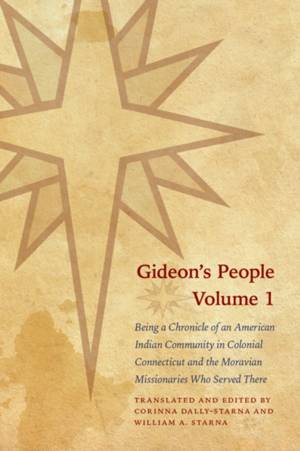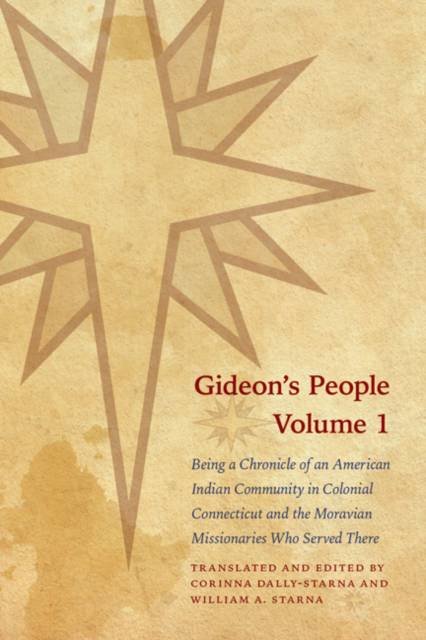
- Afhalen na 1 uur in een winkel met voorraad
- Gratis thuislevering in België vanaf € 30
- Ruim aanbod met 7 miljoen producten
- Afhalen na 1 uur in een winkel met voorraad
- Gratis thuislevering in België vanaf € 30
- Ruim aanbod met 7 miljoen producten
Zoeken
Gideon's People, 2-Volume Set
Being a Chronicle of an American Indian Community in Colonial Connecticut and the Moravian Missionaries Who Served There
€ 259,45
+ 518 punten
Omschrijving
Gideon's People is the story of an American Indian community in the Housatonic Valley of northwestern Connecticut. It is based on some three decades of nearly uninterrupted German-language diaries and allied records kept by the Moravian missionaries who had joined the Indians at a place called Pachgatgoch, later Schaghticoke. It is supplemented by colonial records and regional political, social, and religious histories and ethnographies. As such, it represents the only comprehensive, thoroughly contextualized description of a Native people in southern New England and adjacent eastern New York for the mid-eighteenth century.
The Moravians' diaries report on the day-to-day activities in the community, including house-building, the production of material goods, hunting, fishing, and farming. We are told of marriages, births, deaths, disease, and the calamity of alcohol abuse. The unavoidable interactions with surrounding Indians and close-by colonial farmers and townspeople are offered in detail, along with the sometimes contentious relations with local and colonial authorities. And there is the omnipresence of the missionaries' religious message to the Indians, frequently accepted and then tested by the inevitable temptations and, more than once, spurned. But we also learn of the struggles of the Moravians to feed and clothe themselves at a distance from their congregation in Bethlehem and their endeavors, often marked by conflict and deep personal pain, to lead their Native flock to the Lamb.
The Moravians' diaries report on the day-to-day activities in the community, including house-building, the production of material goods, hunting, fishing, and farming. We are told of marriages, births, deaths, disease, and the calamity of alcohol abuse. The unavoidable interactions with surrounding Indians and close-by colonial farmers and townspeople are offered in detail, along with the sometimes contentious relations with local and colonial authorities. And there is the omnipresence of the missionaries' religious message to the Indians, frequently accepted and then tested by the inevitable temptations and, more than once, spurned. But we also learn of the struggles of the Moravians to feed and clothe themselves at a distance from their congregation in Bethlehem and their endeavors, often marked by conflict and deep personal pain, to lead their Native flock to the Lamb.
Specificaties
Betrokkenen
- Uitgeverij:
Inhoud
- Aantal bladzijden:
- 1376
- Taal:
- Engels
- Reeks:
Eigenschappen
- Productcode (EAN):
- 9780803224278
- Verschijningsdatum:
- 1/07/2009
- Uitvoering:
- Hardcover
- Formaat:
- Genaaid
- Afmetingen:
- 155 mm x 231 mm
- Gewicht:
- 1156 g

Alleen bij Standaard Boekhandel
+ 518 punten op je klantenkaart van Standaard Boekhandel
Beoordelingen
We publiceren alleen reviews die voldoen aan de voorwaarden voor reviews. Bekijk onze voorwaarden voor reviews.










